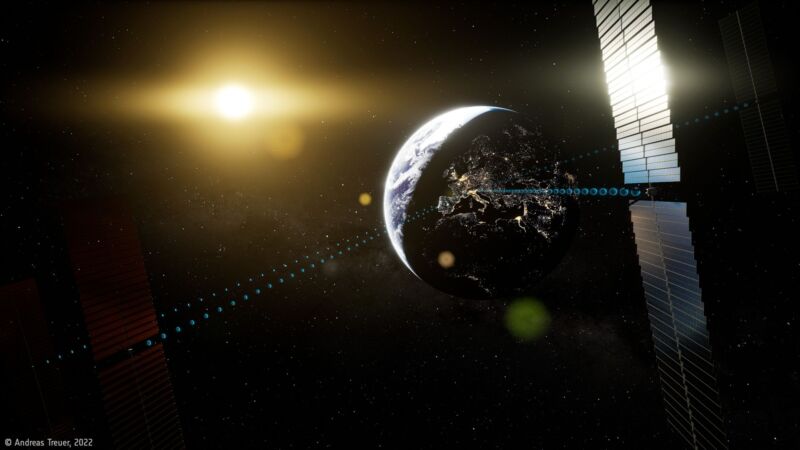
Europe is seriously considering developing space-based solar power to increase its energy independence and reduce greenhouse gas emissions, the leader of the European Space Agency said this week.
"It will be up to Europe, ESA and its Member States to push the envelope of technology to solve one of the most pressing problems for people on Earth of this generation," said Josef Aschbacher, director general of the space agency, an intergovernmental organization of 22 member states.
Previously the space agency commissioned studies from consulting groups based in the United Kingdom and Germany to assess the costs and benefits of developing space-based solar power. ESA published those studies this week in order to provide technical and programmatic information to policymakers in Europe.
Aschbacher has been working to build support within Europe for solar energy from space as a key to energy de-carbonization and will present his Solaris Program to the ESA Council in November. This council sets priorities and funding for ESA. Under Aschbacher's plans, development of the solar power system would begin in 2025.
In concept, space-based solar power is fairly straightforward. Satellites orbiting well above Earth's atmosphere collect solar energy and convert it into current; this energy is then beamed back to Earth via microwaves, where they are captured by photovoltaic cells or antennas and converted into electricity for residential or industrial use. The primary benefits of gathering solar power from space, rather than on the ground, is that there is no night or clouds to interfere with collection; and the solar incidence is much higher than at the northern latitudes of the European continent.
The plans
The two consulting reports discuss development of the technologies and funding needed to start to bring a space-based power system online. Europe presently consumes about 3,000 TWh of electricity on an annual basis, and the reports describe massive facilities in geostationary orbit that could meet about one-quarter to one-third of that demand. Development and deployment of these systems would cost hundreds of billions of euros.
Why so much? Because facilitating space-based solar power would require a constellation of dozens of huge, sunlight-gathering satellites located 36,000 km from Earth. Each of these satellites would have a mass 10 times larger, or more, than that of the International Space Station, which is 450 metric tons and required more than a decade to assemble in low Earth orbit. Launching the components of these satellites would ultimately require hundreds or, more likely, thousands of launches by heavy lift rockets.
The report by British firm Frazer-Nash even includes a photograph of SpaceX's Falcon Heavy rocket and a schematic of its Starship vehicle. The reports also note that the initiation of a space-based solar power program could spur development of a fully reusable, super heavy lift rocket in Europe for this purpose. The bottom line is that the launch demands would be tremendous.
"Using projected near-term space lift capability, such as SpaceX’s Starship, and current launch constraints, delivering one satellite into orbit would take between 4 and 6 years," the Frazer-Nash report states. "Providing the number of satellites to satisfy the maximum contribution that SBSP could make to the energy mix in 2050 would require a 200-fold increase over current space-lift capacity."
reader comments
580